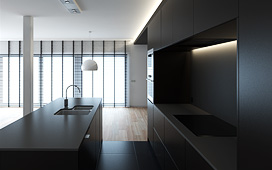

If you’re rendering refrative materials like glass or water against a plain environment background you may have issues with the alpha channel for transparent objects. If you’re on Maya try this one, here’s an XSI LWF tutorial and lastly one for Cinema4D users. Still struggling with the linear workflow process or want to learn more about it? Here’s a great tutorial on linear workflow for 3ds Max. In this tutorial we aren’t going to go about combining all our passes into one file, which while neater is a bit more complicated. When choosing your output file type in your render settings simply choose EXR and the defaults should suffice. To make sure we can take advantage of that we need to render to EXR files in at least 16 bit half floating point. Once you start rendering be sure to click the sRGB button at the bottom of the VRay frame buffer window. Simply enable it in the VRay frame buffer drop down menu.

Lastly we need to use the VRay frame buffer instead of the Max frame buffer. Do NOT check the linear workflow box despite it’s name. In the “Color Mapping” section of VRay’s main rendering panel we need to set the gamma to 2.2 and check “Don’t affect colors (adaptation only)”. This will be correct for most image file types however HDRs and other linear colour space files should be set to 1.0. When you choose an image as a texture select “Override” in the gamma settings and set it to 2.2. This can be a pain if you’ve already completed a scene so in future make sure you set up your linear workflow first before doing anything else. Next we need to make sure all our textures and images are set to the correct gamma. Open up the Gamma and LUT settings from the Rendering menu in 3ds Max and check the following: “Enable Gamma/LUT Correction”, set the gamma to 2.2, check both “Materials and Colors” boxes, and set the bitmap input gamma to 2.2 and it’s output to 1.0. I won’t go into why we have to do gamma correction, just how we do it. This is a necessary evil for all rendering and should be adhered to whether you’re rendering in passes or not. The first step is to set up our linear workflow. We’ll start off with a basic composite using only 5 passes and further on we’ll tackle an advanced method using 13 render elements.

The same principles will apply to other compositing and 3D packages as well. In this tutorial I’m going to get straight to point with quick yet powerful formulas for advanced render element compositing in After Effects using VRay for 3ds Max. Being able to adjust colours, reflections and even individual lights in the scene long after the render is complete is not only exceptionally powerful, but also sometimes necessary for speedy turnaround on client changes. Compositing VRay render passes is an important subject for the purposes of both quality and flexibility in our compositing workflow.


 0 kommentar(er)
0 kommentar(er)
